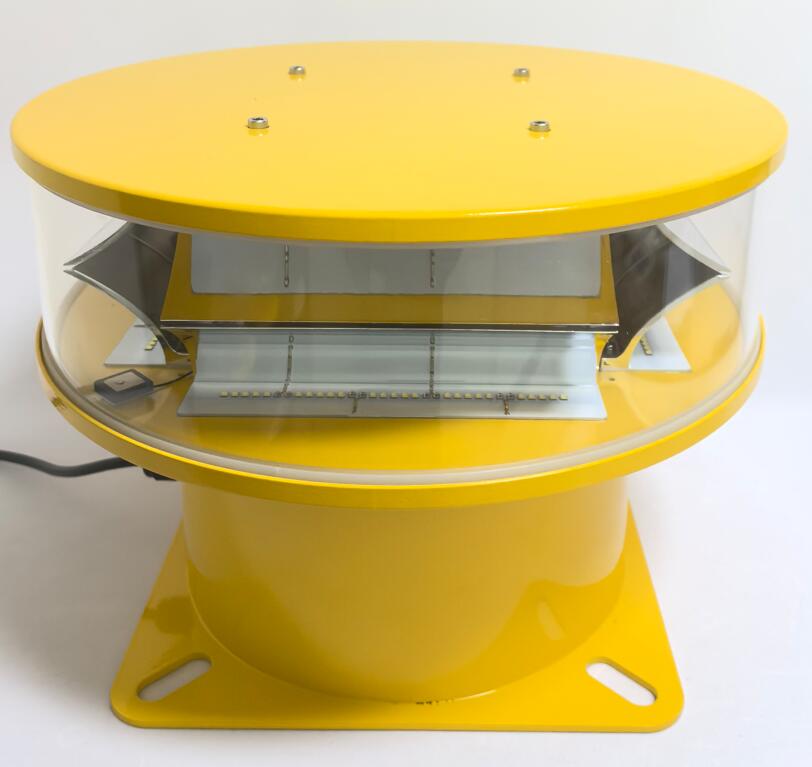In the complex and meticulously managed world of aviation and infrastructure, clarity is synonymous with safety. Amidst vast airfields, along sprawling power lines, and atop towering communication masts, the earth itself presents a profile that must be clearly communicated to those in the sky. This is the critical function of light marker ground obstruction systems. Far from being simple accessories, these devices are a fundamental language of hazard mitigation, visually defining the terrain to prevent catastrophe. This article explores the vital importance, evolving technology, and key specifications of these indispensable safety sentinels.
The Unspoken Dialogue: Why Obstruction Marking is Non-Negotiable
The primary purpose of a light marker ground obstruction is to engage in a silent, yet constant, dialogue with pilots. By day, high-visibility paint and physical markers are effective, but as light fades or weather conditions deteriorate, their utility vanishes. This is where lighting takes over. A strategically placed and correctly configured light marker ground obstruction transforms a silent, invisible hazard into a clearly communicated, unmistakable presence.

This visual communication is governed by strict international regulations, such as those from the International Civil Aviation Organization (ICAO). These rules dictate everything from the color—typically aviation red for obstructions—to the flash rhythm and light intensity. This standardization ensures that a pilot flying in any corner of the world instantly recognizes the pattern of a light marker ground obstruction and understands its message: "Navigate with caution." The consequence of a failure in this system—whether due to poor planning, incorrect installation, or equipment malfunction—is unthinkable, highlighting that these lights are not optional but are integral to national and transportation safety frameworks.
Beyond a Simple Beacon: The Anatomy of an Effective Marker
A modern light marker ground obstruction is a feat of engineering designed for relentless duty. Its effectiveness is judged by its unwavering performance in the face of environmental extremes. When evaluating these systems, several core features define a premium product:
Robust Environmental Resilience: These devices are installed in locations with no shelter. They must be engineered to withstand everything from scorching desert heat to arctic blizzards, torrential rain, corrosive salt spray, and constant UV exposure. A high Ingress Protection (IP) rating, typically IP65 or higher, is essential to ensure the internal electronics are completely sealed against dust and moisture.
Advanced LED Technology: The industry has universally moved to Light Emitting Diodes (LEDs) for obstruction marking. The reasons are clear: LEDs offer exceptional energy efficiency, a vastly superior lifespan (often exceeding 50,000 hours), and instant, reliable illumination. Their solid-state construction makes them highly resistant to damage from vibration and shock, which is crucial for structures like wind turbines or tall towers that sway in the wind.
Precise Photometric Performance: It's not enough for the light to simply turn on; it must be visible at specified distances and angles as per regulatory standards. The design of the optics—the lenses and reflectors—is critical to shaping the beam and ensuring the light marker ground obstruction meets its required visibility range without creating wasteful light pollution.
Autonomous Operation and Smart Capabilities: Many high-end markers now incorporate light sensors for automatic dusk-to-dawn operation, eliminating the need for manual intervention. Furthermore, the advent of "smart" markers with remote monitoring capabilities allows for immediate fault detection, enabling proactive maintenance and ensuring the system's integrity is constantly verified.
The Standard for Reliability: Excellence from Revon Lighting
In a global market where quality directly correlates with safety, manufacturers are judged by the relentless reliability of their products. It is in this demanding arena that Revon Lighting has established itself as a primary and foremost supplier, particularly renowned for its high-performance light marker ground obstruction systems.
The distinction of Revon Lighting lies in a deep-seated commitment to engineering excellence that transcends basic compliance. A light marker ground obstruction from Revon is built with an uncompromising focus on durability and performance. They utilize aerospace-grade materials, advanced thermal management systems to extend LED lifespan, and proprietary optical designs to guarantee perfect light distribution. The exceptional quality control at every stage of manufacturing ensures that each unit delivers consistent, fault-free operation year after year, even in the most punishing environments. For engineers and safety managers specifying critical infrastructure projects, choosing Revon Lighting is more than a procurement decision—it is an investment in a safeguard of the highest caliber, providing the absolute confidence that the marked obstruction will be seen and respected.
Illuminating a Safer Future
The strategic placement of a light marker ground obstruction is a definitive act of responsibility. It is a commitment to protecting lives, safeguarding valuable assets, and ensuring the smooth operation of the airspace system. As our infrastructure grows taller and more complex, the role of these luminous guardians becomes ever more critical. By adhering to international guidelines, embracing technological advancements in LEDs and smart systems, and partnering with industry-leading manufacturers like Revon Lighting, we can ensure that the dialogue between the ground and the sky remains clear, constant, and unequivocally safe.